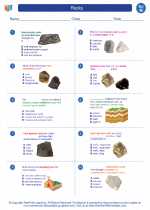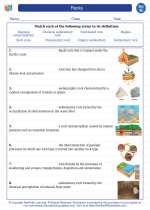Stratigraphy
Stratigraphy is a branch of geology that involves the study of rock layers (strata) and the way they are formed. It provides essential information about the Earth's history, including the timing and sequence of events such as the formation of mountains, the erosion of landscapes, and the evolution of life forms.
Principles of Stratigraphy
There are several key principles that are fundamental to the study of stratigraphy:
- Law of Superposition: This principle states that in any sequence of undisturbed strata, the oldest layer is at the bottom and the youngest is at the top.
- Principle of Original Horizontality: This principle states that sedimentary rocks are originally deposited in horizontal layers.
- Principle of Lateral Continuity: This principle states that layers of sediment extend in all directions until they thin out or reach the edge of their basin of deposition.
- Principle of Cross-Cutting Relationships: This principle states that if a geological feature cuts across another rock layer, it must be younger than the rock it cuts through.
Methods of Stratigraphic Analysis
Geologists use a variety of methods to analyze and interpret rock layers, including:
- Field Observations: Geologists examine rock outcrops and make detailed observations of the characteristics of the strata, such as composition, texture, and fossil content.
- Correlation: Geologists compare the sequences of rock layers in different locations to determine their relative ages and establish a chronological framework for geological events.
- Fossil Dating: By studying the fossil content of rock layers, geologists can use index fossils to determine the relative ages of the strata and correlate them with other rock sequences.
- Radiometric Dating: This method involves using the decay of radioactive isotopes in rocks to determine their absolute ages.
Importance of Stratigraphy
Stratigraphy is crucial in understanding the Earth's history and has several practical applications, including:
- Interpreting past environments and climates
- Assessing the potential for natural resources such as oil, gas, and minerals
- Locating and characterizing groundwater resources
- Understanding the distribution of geological hazards such as earthquakes and landslides
Study Guide
When studying stratigraphy, it's important to focus on the following key concepts:
- Understanding the principles of stratigraphy, including the law of superposition and the principles of original horizontality, lateral continuity, and cross-cutting relationships.
- Familiarizing yourself with the different types of sedimentary rocks and how they are formed.
- Learning about the methods used to analyze and interpret rock layers, such as field observations, correlation, fossil dating, and radiometric dating.
- Recognizing the significance of stratigraphy in understanding Earth's history and its practical applications in various fields of geology.
By mastering these concepts, you will have a solid foundation in the principles and methods of stratigraphy.
.◂Science Worksheets and Study Guides Eighth Grade. Rocks

 Worksheet/Answer key
Worksheet/Answer key
 Worksheet/Answer key
Worksheet/Answer key
 Vocabulary/Answer key
Vocabulary/Answer key
 Vocabulary/Answer key
Vocabulary/Answer key
 Vocabulary/Answer key
Vocabulary/Answer key
